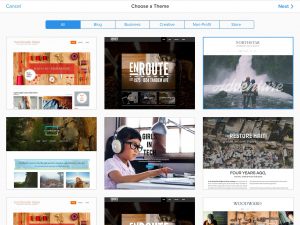 Student portfolios are a buzzword in education right now. The idea isn’t new, as many educators know. What is new is the idea of digital portfolios. Many software companies are jumping on board and offering some user-friendly options, which are perfect for many classrooms and families (these include Seesaw and Sesame).
Student portfolios are a buzzword in education right now. The idea isn’t new, as many educators know. What is new is the idea of digital portfolios. Many software companies are jumping on board and offering some user-friendly options, which are perfect for many classrooms and families (these include Seesaw and Sesame).
As a fifth grade teacher, I am focused on providing my students with a tool that they can use and manage independently throughout their school career. Enter Google.
As a district, we use Google for all of our email and applications. Each student has a Google account that is assigned in elementary school, but for which the ability to use email is turned off. Students are still able to use Google Docs and the other applications in their Google Drive, and beginning in kindergarten, they create docs and save them in a folder.
My vision for my students’ portfolios extends beyond this, into a format that I used during my graduate program: a website.
Though this may sound daunting, I actually teach my students how to create a basic website during our informational unit of study. Google allows us to download a template and edit from there. This works extremely well and helps to engage, enhance, and extend student learning. (See Triple E Framework for more information.)
Students are more engaged in the task; the use of technology enhances the learning (takes it to levels paper and pencil could not); and they are more likely to extend their learning beyond the school day. That is, they work on the task at home, when they don’t have to, but want to!
These websites are all shared with the teacher “as owner,” which ensures that anything that may need to be edited can be done quickly, by an adult.
The Vision
If students were taught to create a website for their portfolios, the possibilities would be endless.
Students could have a page for each subject area. There, they could upload their best pieces of writing, pictures of projects, and even videos of presentations and performances. The site could grow with them throughout their school career and into college and/or work applications. Students could easily capture community service and extracurricular activities, with pictures, reflections, and uploaded certificates. The site could be held “in house” to address privacy concerns until the student turned 18.
Considerations
Of course, Google is not the only platform students can use. There are many great options out there (Weebly, Wix, and WordPress are a few of the top ones). There would be several factors that would need to be considered for those, including: management (ease for teacher), cost (upgraded sites cost money in order to have certain features), and privacy (having sites as part of a district account allows for greater overview).
Still, no matter what the vehicle, online portfolios increase student agency and have the potential to transform student learning. If our students were constantly thinking about how they could demonstrate and capture their best learning, and they had the power to design and showcase that learning, how powerful would that be?
 Beth Rogers is a fifth grade teacher for Clarkston Community Schools, where she has been teaching full time since 2006. She is blessed to teach Language Arts and Social Studies for her class and her teaching partner’s class, while her partner teaches all of their math and science. This enables them to focus on their passions and do the best they can for kids. Beth was chosen as Teacher of the Year for 2013-2014 in her district. She earned a B.S. in Education at Kent State University and a Master’s in Educational Technology at Michigan State University.
Beth Rogers is a fifth grade teacher for Clarkston Community Schools, where she has been teaching full time since 2006. She is blessed to teach Language Arts and Social Studies for her class and her teaching partner’s class, while her partner teaches all of their math and science. This enables them to focus on their passions and do the best they can for kids. Beth was chosen as Teacher of the Year for 2013-2014 in her district. She earned a B.S. in Education at Kent State University and a Master’s in Educational Technology at Michigan State University.


 For the past several years I have been having conversations with different people in my district about having our students create digital portfolios. This effort is finally gaining some ground, though the way has been painfully slow from my perspective.
For the past several years I have been having conversations with different people in my district about having our students create digital portfolios. This effort is finally gaining some ground, though the way has been painfully slow from my perspective. This project has also inspired students to create other sites about personal interests. Seeing the application of this skill in their personal life is exactly the kind of transfer we hope for, and the kind of artifact that students can highlight down the road.
This project has also inspired students to create other sites about personal interests. Seeing the application of this skill in their personal life is exactly the kind of transfer we hope for, and the kind of artifact that students can highlight down the road.